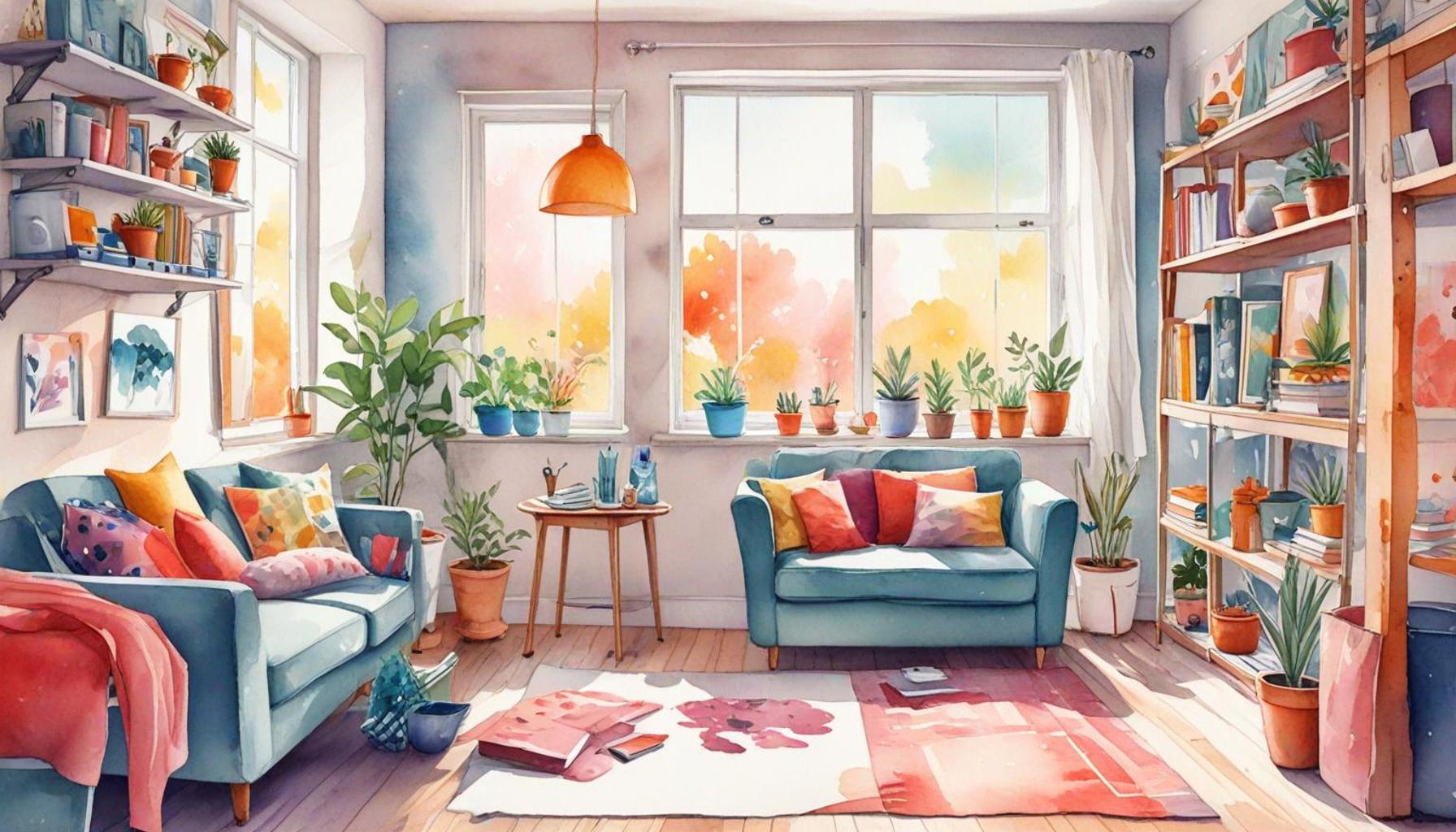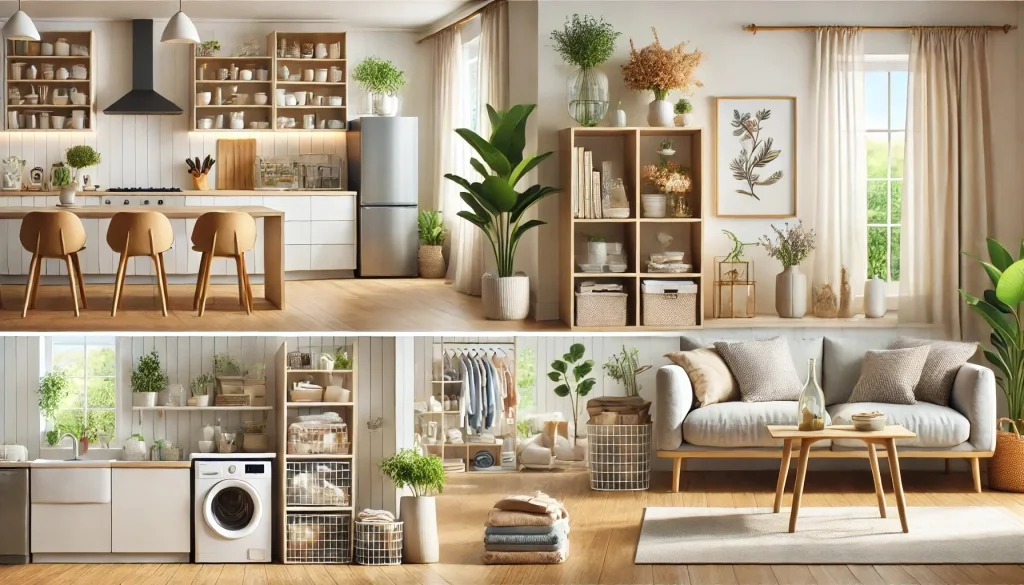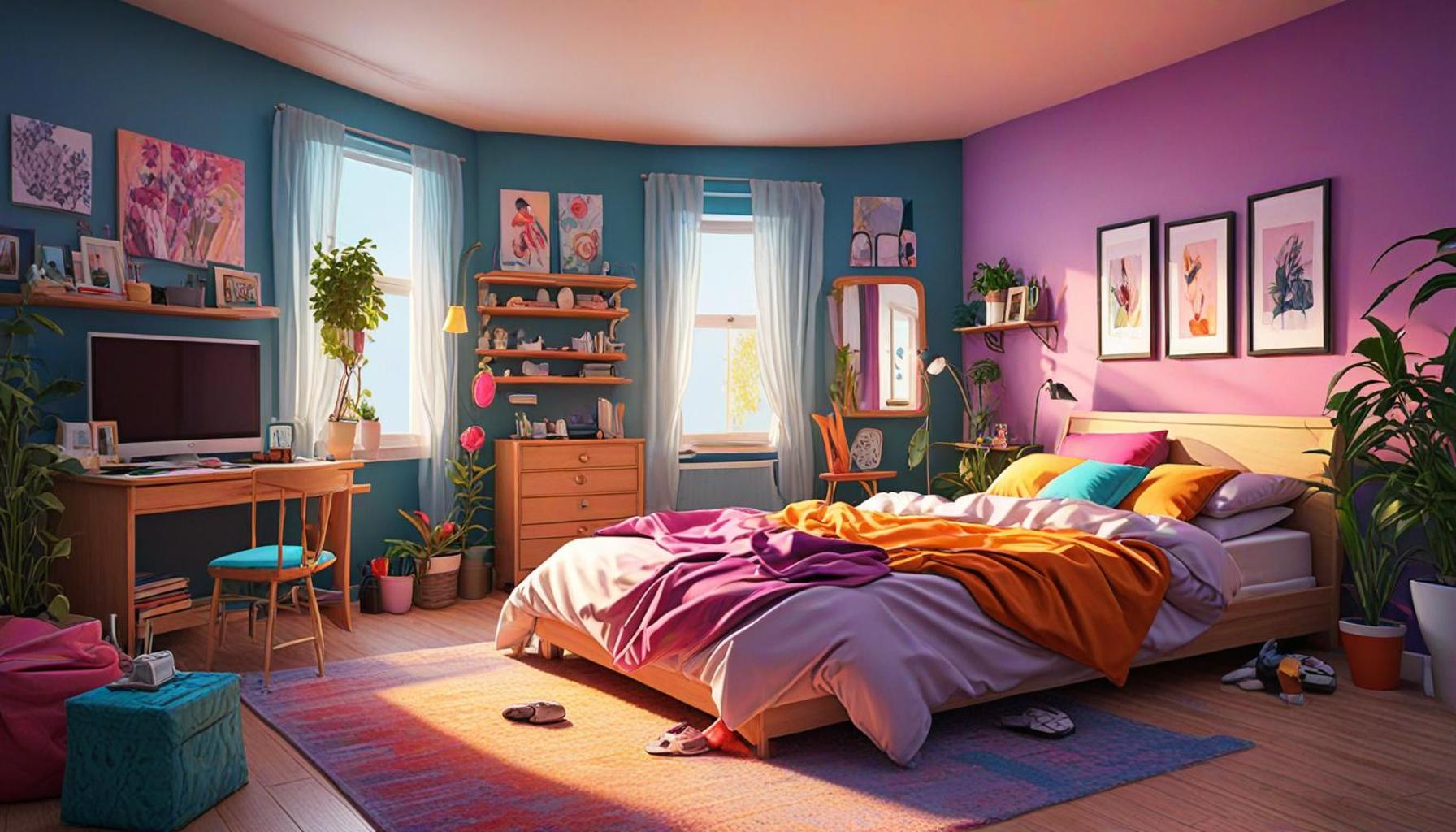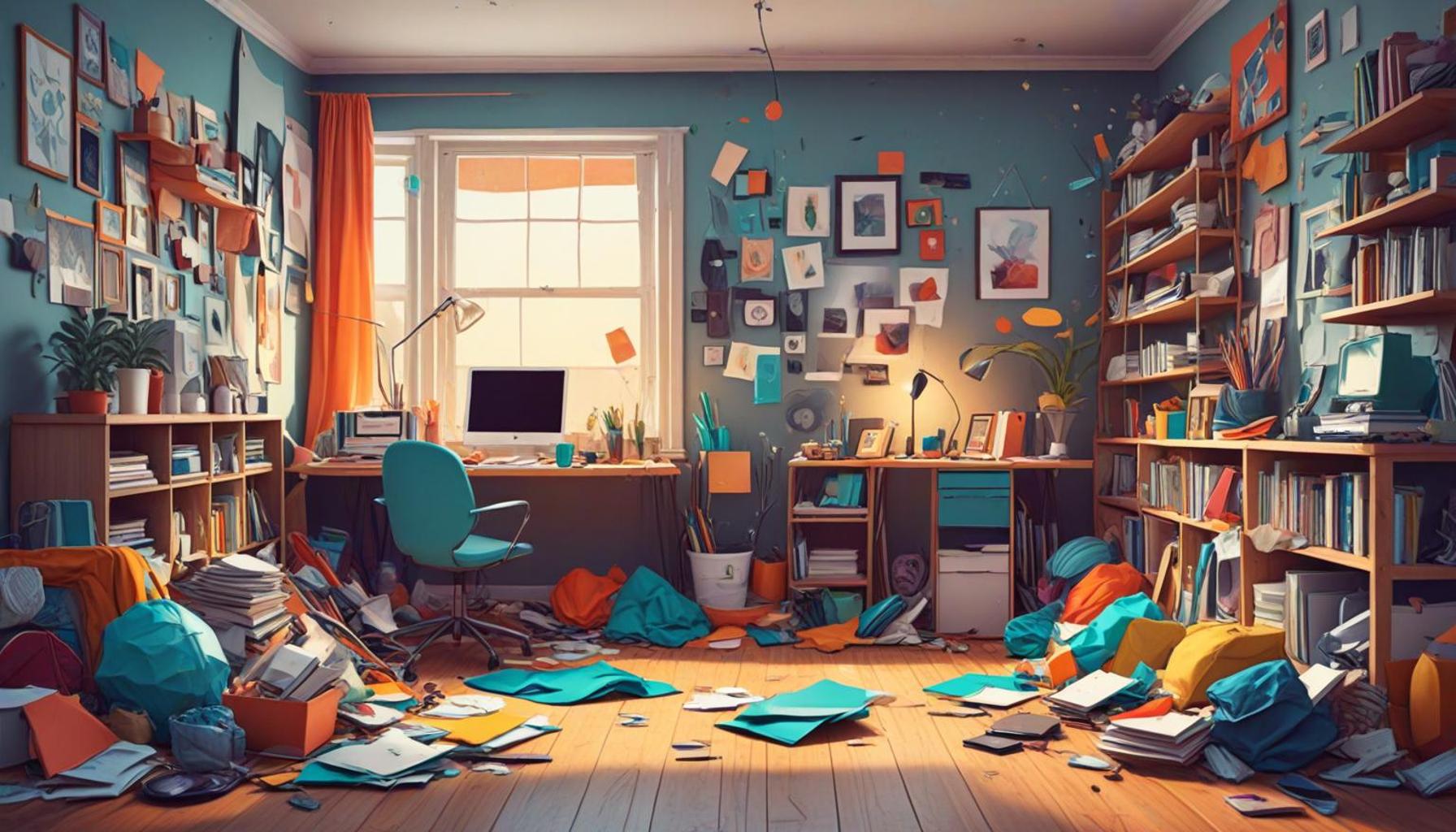Practical Strategies for Reducing Clutter in Small Spaces

Strategies for Maximizing Small Spaces
Living in small spaces can sometimes feel overwhelming as you navigate the fine line between making it functional and keeping it organized. With every square foot of your home impacting its overall flow and utility, finding solutions to optimize your limited area becomes crucial. The good news is that there are numerous effective strategies you can implement to maintain a clutter-free environment without sacrificing comfort or style.
Decluttering Regularly
One of the most transformative practices for creating order is decluttering regularly. This involves setting aside time every few months to sift through your belongings. Start with a single area, like your closet or kitchen drawers, and ask yourself whether each item serves a purpose in your daily life. If it doesn’t elicit joy or utility, consider donating or discarding it. For example, if you haven’t worn a particular clothing item in over a year, it’s time to let it go. This practice not only frees up space but also creates a clearer mind, helping you breathe easier in your home.
Multi-Functional Furniture
Another stellar solution revolves around multi-functional furniture. Investing in pieces that serve more than one purpose can dramatically reduce clutter. For instance, consider a sofa bed for your living area, which provides seating during the day and transforms into a cozy sleeping space for guests at night. Ottomans that double as storage units or coffee tables with hidden compartments can also serve as excellent additions for those striving for practicality while preserving style. These versatile options ensure that every piece of furniture contributes constructively to your living environment.
Vertical Storage Solutions
Don’t overlook the potential of your walls! Implementing vertical storage solutions is a game-changer when dealing with limited square footage. Installing shelving, wall-mounted racks, or hooks can keep essentials off the floor and contribute to an organized imprint within your home. For example, using floating shelves to display books or decorative items gives the illusion of more space while also adding personality and style. Additionally, pegboards in the kitchen or garage can keep tools and utensils neatly arranged and easily accessible.
By actively integrating these strategies, you can create a harmonious living space that is as aesthetically pleasing as it is functional. The journey to a simplified, clutter-free life begins with these straightforward yet impactful steps that can lead to a significant improvement in your everyday experience.

Ultimately, embracing these ideas encourages not only a better-organized home but a more serene lifestyle. By implementing these methods, you can enjoy your surroundings without the chaos of disarray, enhancing your overall quality of life.
DISCOVER MORE: Click here for effective decluttering tips
Embrace the Power of Bins and Baskets
To keep clutter under control, utilizing bins and baskets can be a gamechanger in small spaces. These items not only help you categorize belongings, but also enhance the aesthetics of your living environment. By creating designated spots for various items, you can easily maintain organization and reduce visual noise. For example, consider using decorative baskets to store toys in the living room or extra linens in your bedroom. This approach not only simplifies cleanup but also adds a touch of style to your décor.
Here are a few practical ways to incorporate bins and baskets:
- Labeling: Clearly label bins and baskets to ensure everyone in the household knows where things belong. This helps reinforce organization and encourages accountability for maintaining tidy spaces.
- Under-Bed Storage: Utilize bins that can slide under the bed for seasonal clothing, shoes, or other seldom-used items. This creative use of space keeps your belongings out of sight and easily accessible when needed.
- Kitchen Organization: Use baskets for grouping pantry items, like snacks or baking supplies. This method enables you to find what you need quickly, while also making it easy to keep similar items together.
Smart Use of Mirrors
Another effective technique for creating an illusion of space is to strategically place mirrors throughout your home. Mirrors can reflect light and visually expand the area, making small rooms feel more open. Consider adding a large mirror to a narrow hallway or hanging smaller mirrors in clustered arrangements above furniture. Not only does this brighten your space, but it also serves as a stylish design element.
When selecting mirrors, think about the following:
- Frame Style: Choose mirrors with frames that complement your existing décor, whether it’s modern, vintage, or rustic.
- Placement: Position mirrors across from windows to maximize natural light, boosting the ambiance and overall feel of the room.
- Size: Opt for oversized mirrors for maximum impact, as they tend to enhance the spaciousness more effectively than smaller versions.
Customized Solutions for Each Room
Every small space presents a unique set of challenges, so tailoring your organization solutions to fit each room is essential. Identify the key areas where clutter tends to accumulate, and develop personalized strategies that function effectively within your specific context. For example, if your bathroom lacks sufficient storage, consider installing rack systems or utilizing corner shelves to make the most of every square inch. In a compact bedroom, wall-mounted nightstands with additional storage can yield both convenience and style.
Embracing customized solutions will not only address immediate clutter issues but also encourage more mindful consumption and organization habits. Over time, this will foster an environment that feels open, airy, and conducive to a peaceful lifestyle.
Effective Strategies for Decluttering Your Small Space
Reducing clutter in small spaces not only improves the aesthetic appeal of your home but also enhances your mental well-being and productivity. Implementing practical strategies can make a significant difference in how you utilize and enjoy your living area. Here are some compelling approaches to decluttering your small space:
1. Utilize Vertical Space
One of the most effective ways to manage clutter in small areas is by maximizing vertical space. Installing shelves, wall-mounted organizers, or pegboards allows you to keep items off the floor while still maintaining easy access. Hanging pots and pans in the kitchen or using tall bookshelves can create additional storage without sacrificing floor space.
2. Adopt the “One In, One Out” Rule
To prevent clutter from accumulating, adopt the “One In, One Out” rule. For every new item you bring into your home, ensure you remove an existing item. This principle helps maintain balance and encourages thoughtful purchasing habits, ensuring your space remains organized.
3. Embrace Multi-Functional Furniture
Investing in multi-functional furniture can drastically simplify organization in a compact living area. Pieces such as ottomans that double as storage or beds with built-in drawers can provide solutions to keeping your belongings neatly tucked away while serving essential functions.
4. Sort and Categorize Regularly
Regularly sorting and categorizing your belongings can help you identify items you no longer need. Creating designated areas for specific categories (like seasonal clothing or frequently used tools) can simplify access and streamline the decluttering process. Schedule time each month to reevaluate your items and remove anything that no longer serves you.
5. Create Zones
Organizing your space into distinct zones can enhance functionality while minimizing clutter. For example, designating an area solely for reading or crafting can help confine related items within the zone, preventing scattering throughout the entire space. This approach makes it easier to keep each area tidy and organized.
6. Digitize Your Documents
Paper clutter can easily accumulate in any home, particularly in small spaces. Transitioning to digital formats—like scanning important documents, receipts, or photos—can significantly reduce physical clutter. Utilizing cloud storage services will not only free up space but also ensure your essential documents are easily accessible and secure.
7. Set Up a Donation Station
Establishing a visible donation station in your home encourages you to consistently evaluate what you possess. Designate a box or basket for items you plan to donate, making it convenient to drop off items as you come across them. This habit helps maintain a clutter-free environment while serving a charitable purpose.
8. Invest in Organizational Tools
Utilizing organizational tools like bins, baskets, and drawer dividers can significantly improve the functionality of a small space. Having designated containers for different items helps reduce visual clutter and simplifies finding what you need, making it easier to maintain an orderly environment.By integrating these strategies into your daily routine, you will find that reducing clutter doesn’t just create a more appealing environment but also fosters a sense of serenity and organization, ultimately enhancing your quality of life. Now let’s take a look at some effective advantages of these practical strategies in the following table.
| Advantage | Description |
|---|---|
| Improved Space Utilization | By utilizing vertical space and multi-functional furniture, every square foot is maximized for use. |
| Mental Clarity | A decluttered space reduces distractions, leading to increased concentration and productivity. |
DISCOVER: Click here for essential decluttering tips
Maximize Vertical Space
In small spaces, vertical storage solutions can significantly impact how clutter is managed and reduced. By taking advantage of wall space, you can transform areas that are usually void into functional storage options. Consider shelving, hooks, and even pegboards as creative ways to keep items off the floor and readily accessible.
Here are some innovative ways to utilize vertical space:
- Wall Shelves: Install floating shelves to display books, plants, or decorative items. This not only keeps surfaces clear but also allows you to showcase your personality through your décor.
- Hooks and Hangers: Use decorative hooks to hang coats, bags, or accessories, eliminating the need for bulky furniture. Mounting hook strips in entryways can provide immediate organization and a warm welcome for guests.
- Pegboards: Consider pegboards in craft areas or kitchens to organize tools, utensils, or art supplies. Their versatility allows for easy reconfiguration as needs change, keeping your space fluid and adaptive.
Adopt Minimalist Mindset
Embracing a minimalist lifestyle can be a transformative approach to reducing clutter in small spaces. By prioritizing quality over quantity and decluttering regularly, you can maintain a serene environment. Understanding that less is often more encourages a mindful consumption philosophy, leading to wiser choices when acquiring new items.
Here are steps to incorporate minimalism effectively:
- Decluttering Routine: Schedule regular decluttering sessions, such as once a month. Evaluate your belongings and ask yourself whether each item serves a purpose or brings joy to your life.
- One In, One Out: Adopt the one-in, one-out rule, where for every new item you bring into your home, one existing item must be removed. This simple rule helps keep your possessions in check.
- Digital Decluttering: Don’t forget about digital clutter. Organizing files and emails, deleting unused apps, and setting up cloud storage can free up not just physical space but also mental bandwidth.
Smart Furniture Choices
Investing in multifunctional furniture is a practical way to combat clutter in small living areas. These pieces are designed to serve multiple purposes, allowing you to maximize space without sacrificing style. For instance, a sofa bed can function as both seating and a sleeping area, while an ottoman with storage capabilities can be used for seating and to hide away blankets or games.
Consider these multifunctional furniture options:
- Storage Ottomans: These versatile pieces can function as footrests, extra seating, or coffee tables, all while hiding away clutter.
- Dining Tables with Storage: Look for dining tables that come equipped with shelves or cabinets underneath. This additional storage can hold dinnerware or table linens.
- Foldable Desks: In a home office or study area, a foldable desk can be tucked away when not in use, freeing up valuable floor space.
By testing out these practical strategies for reducing clutter in small spaces, you can create a harmonious home that feels open, organized, and tailored to your needs. Each step taken not only enhances your living space but also contributes to a lifestyle that values simplicity and intentionality.
DIVE DEEPER: Click here to discover the emotional benefits of decluttering
Conclusion
In conclusion, reducing clutter in small spaces is not merely about minimizing possessions; it’s about cultivating a lifestyle that embraces organization, functionality, and intentionality. By leveraging vertical storage solutions, adopting a minimalist mindset, and investing in multifunctional furniture, you create a living environment that is both aesthetically pleasing and efficient. These practical strategies encourage a mindset shift where every item has a purpose, and every inch of space is maximized.
As you embark on this journey towards a more organized home, consider the impact of your choices on your daily life. Incorporating regular decluttering sessions, utilizing space-saving designs, and embracing a culture of mindful consumption not only minimizes clutter but can also lead to a sense of mental clarity and well-being. As reported by the National Association of Professional Organizers, individuals who embrace organizing and decluttering efforts report feeling less stressed and more in control of their environments.
Ultimately, creating a clutter-free home is a personal journey that reflects your values and priorities. Take the first step today and explore these strategies—your small space may just transform into a sanctuary of peace and order, enhancing your quality of life. By implementing these practical strategies for reducing clutter in small spaces, you are not only improving your immediate surroundings but also fostering a lifestyle that celebrates simplicity and functionality.



